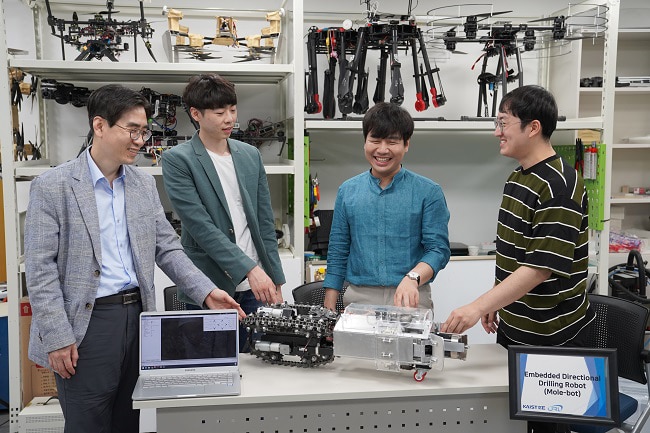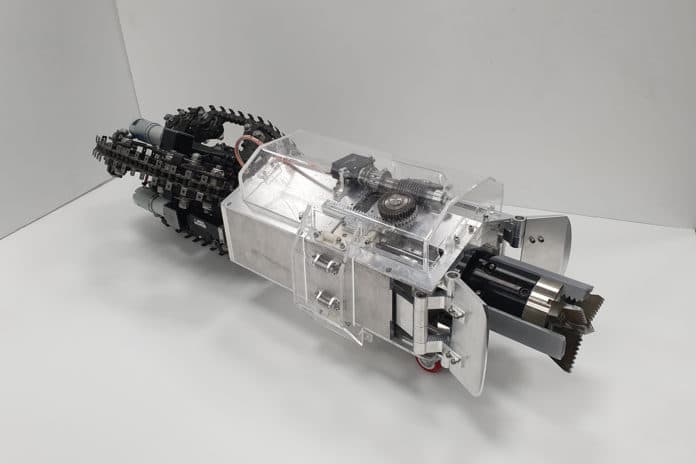Korea Advanced Institute of Science and Technology (KAIST) research team has developed a mole-inspired robot called Mole-Bot. The drilling biomimetic robot can be effectively used for unmanned exploration of underground resources, extreme regions of space by imitating the biological structure and excavation habits of moles.
The Mole-bot is inspired by both the African mole-rat and European mole. “The crushing power of the African mole-rat’s teeth is so powerful that they can dig a hole with 48 times more power than their body weight. We used this characteristic to build the main excavation tool. And its expandable drill is designed not to collide with its forelimbs,” said Professor Myung.
The ‘Mole-bot’ was developed with the goal of exploring the area where buried methane gas (Coalbed Methane), which can be used as a new energy source by replacing existing energy sources such as petroleum and coal, or Rare Earth Elements, which require highly advanced drilling technologies, as well as sampling the space planet.

Credits: KAIST
The mole-inspired robot is 25cm in diameter and 84cm in length and weighs 26kg, and is largely divided into a drilling part, debris removing part, a waist part, and a moving part. The drilling section was created by imitating the mole rat’s teeth. After digging, the robot removes the excavated soil and debris using its forelimbs. This embedded muscle feature, inspired by the European mole’s scapula, converts linear motion into a powerful rotational force. The robot’s elongated waist can change its direction 360°, like living mammals.
In the underground environment, it is difficult to use the wireless communication signal because the surrounding is composed of rocks and soil, and it is difficult to use the vision and laser sensors because the inside is narrow and dark.
To solve this, the research team developed and applied new sensor systems and algorithms to identify the robot’s position and orientation using graph-based 3D Simultaneous Localization and Mapping (SLAM) technology that matches the Earth’s magnetic field sequence, which enables 3D autonomous navigation underground.
Professor Myung’s research team expects that the Mole-bot will not only be able to explore underground resources in a much more efficient way than existing robots but will also have excellent economic efficiency.
“We look forward to a more efficient resource exploration with this type of drilling robot. We also hope Mole-bot will have a very positive impact on the robotics market in terms of its extensive application spectra and economic feasibility,” said Professor Myung.
